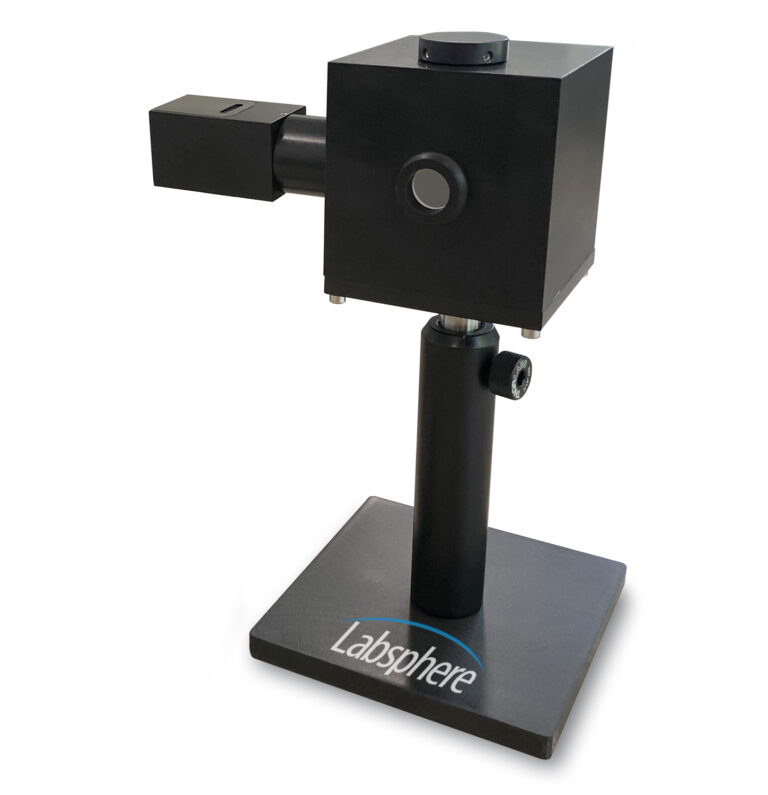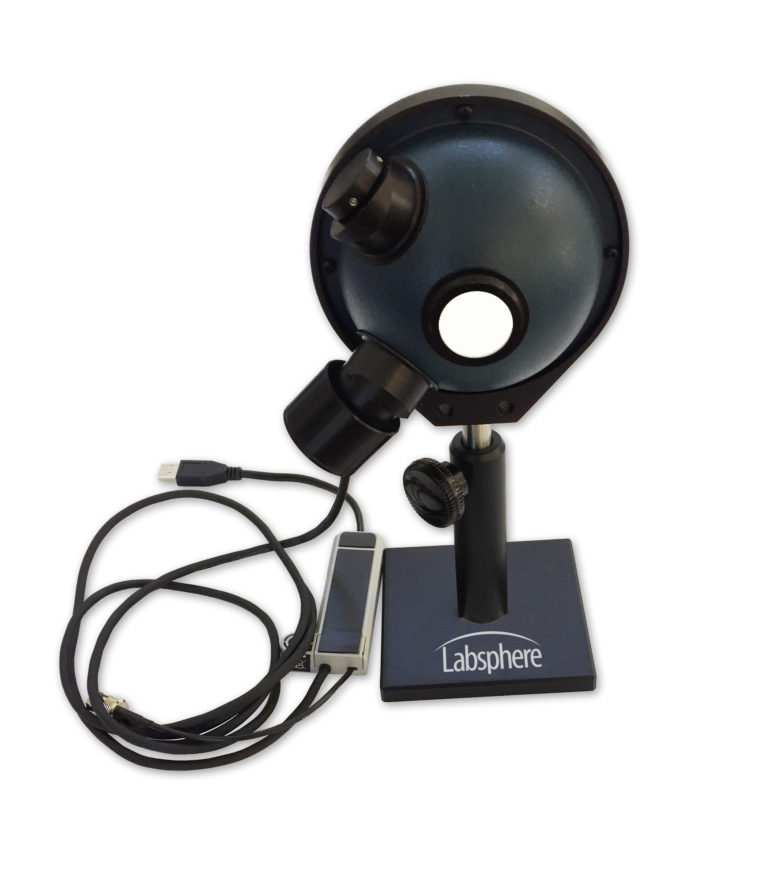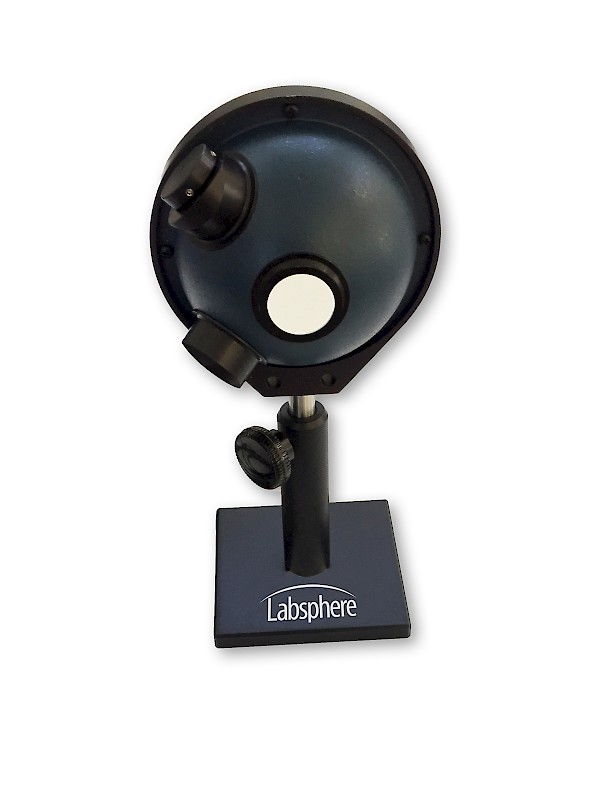Laser Power Measurement Solutions
Shop laser power meters and laser power measurement systems from LabSphere for reliable and accurate laser power measurements. Whether you need a handheld power meter for on-the-go measurements or a sophisticated system for in-depth analysis, LabSphere has you covered. Our instruments are renowned for their precision and durability, ensuring consistent results over time.
Laser Power Meters & Measurement Solutions: Laser Power Measurement
Showing all 3 results
-

Laser Power Measurement Spheres and Sensors
Select options -

Pulsed Laser Power Measurement Systems
Select options -

Laser Power Measurement Spheres
Select options
What is Laser Power Measurement?
Laser power measurement is the process of quantifying the amount of power or energy emitted by a laser. It plays a critical role in ensuring laser safety and assessing performance across various industries, including scientific research, manufacturing, and medical applications.
Accurate measurement of laser power is crucial for two main reasons:
1. Safety: Lasers can be hazardous if not used properly. By measuring the power output, operators can ensure compliance with safety standards and implement appropriate control measures, product classification, and labeling.
2. Performance Optimization: Different applications require specific power levels to achieve optimal results. Measuring laser power helps engineers fine-tune their systems for maximum efficiency, effectiveness and application.
Methods of Laser Power Measurement
There are several methods available to measure laser power, each with its own strengths and limitations:
1. Thermal Power Measurement: This is one of the most commonly used techniques. It involves using a material with known thermal properties to absorb the laser energy. The resulting temperature rise is then measured and used to calculate the incident power. While this method is suitable for continuous-wave lasers, it may not be accurate enough for pulsed or high-power lasers due to heat dissipation limitations.
2. Photodiode-Based Techniques: These methods utilize photodiodes, which are devices that convert incident light into electrical current. By calibrating the photodiode response, it is possible to obtain accurate power measurements. This technique offers fast response times and a wide dynamic range, making it suitable for a variety of applications. Combined with an integrating sphere enhances the performance by reducing sensitivities to beam alignment, addresses the difficulty in measuring highly divergent beams, and an integrating sphere attenuates the power on the sensors enabling higher power measurements.
3. Pyroelectric Detectors: Pyroelectric detectors use crystals that generate electrical charges proportional to the absorbed laser energy. They are well-suited for pulsed lasers and can provide accurate measurements across a broad range of wavelengths and powers. However, this technique requires careful calibration and consideration of crystal size and thermal response time.
When selecting a power measurement technique, it is important to consider the following factors:
- Laser type
- Power level: Peak power or average power
- Wavelength range
- Pulse width
- Pulse Frequency
- Duty Cycle
- Beam Divergence
- Required accuracy
In some cases, a combination of methods may be necessary to ensure accurate measurements across different laser systems.
Best Practices for Laser Power Measurement
To obtain reliable and consistent results, it is essential to follow these best practices:
1. Calibration: Regular calibration of measurement devices is crucial to maintain accuracy over time. This involves comparing the output readings with a known reference source.
2. Maintenance: Keeping the measurement setup clean and well-maintained helps prevent any issues that could affect accuracy.
3. Understanding Limitations: Each measurement technique has its own limitations. Being aware of these limitations allows researchers and engineers to make informed decisions when selecting a power measurement method for their specific laser applications.
By following these guidelines, professionals can ensure that their laser power measurements are accurate and reliable, leading to safer operations and improved performance in various industries.
High-Power Laser Measurement Systems
High-power laser measurement systems typically use thermal-based techniques, such as water-cooled sensors or calorimeters. These methods can handle high energy densities and provide accurate measurements in the kilowatt to megawatt range. However, they may have slower response times compared to photodiodes or pyroelectric detectors.
Here are some important considerations when working with high-power lasers:
1. Cooling Capacity: Make sure the sensor has sufficient cooling capacity to prevent overheating.
2. Thermal Damage: Be aware of the potential for thermal damage and take necessary precautions.
3. Alignment and Stability: Ensure proper alignment and stability of the measurement system to avoid inaccuracies or damage.
When dealing with high-power lasers, it’s crucial to prioritize safety:
- Wear appropriate protective eyewear .
- Use interlocks to disable the laser when necessary.
- Implement suitable shielding to minimize exposure to the laser beam.
Regular monitoring and calibration of the measurement system are also essential for maintaining accuracy and safe operation.
By carefully considering these factors, researchers and engineers can choose the most suitable power measurement method for their specific high-power laser applications.
Why laser power measurement is necessary
Accurate laser power measurement is crucial for various reasons. First and foremost, it ensures the safe operation of the laser system, preventing potential damage or harm to personnel and equipment. Additionally, precise power measurements are essential for quality control in laser manufacturing processes, where even slight deviations can significantly impact the final product’s performance. In research and development, accurate power measurement enables researchers to validate theoretical models, optimize experimental setups, and ensure reproducibility of results. Whether it’s for industrial applications or scientific investigations, choosing the right power measurement technique and implementing proper safety measures are vital for successful and safe laser operations.
How to measure laser power
There are several methods available to measure laser power, each with its own advantages and limitations. One common approach is using a thermopile, which is a device that converts laser power into heat and generates a voltage proportional to the power. Another method is using a photodiode, which directly converts light into an electric current. This current can then be measured to determine the laser power. Other techniques include calorimetry, pyroelectric detectors, and integrating spheres. The choice of method depends on factors such as laser wavelength, power level, beam profile, measurement speed, and cost.
It is important to note that different measurement techniques have different accuracy levels and may be suitable for specific applications. For instance:
- Thermopiles are known for their high-power handling capabilities and broad wavelength range, making them ideal for industrial applications.
- Photodiodes offer fast response time and high sensitivity, making them suitable for research settings where quick measurements are required.
- Calorimeters provide highly accurate measurements by quantifying the heat generated by the laser.
- Pyroelectric detectors are commonly used for pulsed lasers due to their ability to measure rapid changes in power.
- Integrating spheres are useful for obtaining peak power, and average power measurements from near collimated beams to fiber laser, laser modules, and widely divergent lasers, particularly when the beam profiles are non-uniform.
Regardless of the method chosen, it is crucial to follow proper safety protocols when working with lasers. This includes wearing appropriate eyewear, implementing interlocks and safety shut offs, and ensuring that measurement devices can handle the laser’s power levels without damage.
Accurate measurement of laser power is essential for both manufacturing processes and research endeavors. By selecting the most suitable technique based on the specific requirements of the application and observing safety precautions, users can ensure reliable results, optimize performance, and maintain a safe working environment.
Applications for Laser Power Measurement
Laser power measurement is a crucial component in several industries and scientific fields. It is widely used to ensure the efficiency and accuracy of various processes and experiments. Here are some key applications:
1. Manufacturing: In the manufacturing sector, laser power measurements are essential for quality control and process validation. For instance, in additive manufacturing or 3D printing, accurate laser power is necessary to ensure the correct layer thickness and part density.
2. Medical Field: In medical applications such as surgery or therapeutic treatments, monitoring laser power is critical to ensuring patient safety and treatment effectiveness.
3. Telecommunications: Lasers are integral to fiber-optic communication systems. Accurate measurement of laser power ensures reliable data transmission over long distances.
4. Research & Development: In scientific research, particularly in physics and chemistry labs, laser power measurements are vital for experimental accuracy.
5. Military Applications: Lasers play a significant role in defense technology. Laser-guided systems require precise power measurements for optimal performance.
Remember, regardless of the application, it’s crucial to use the correct type of detector for accurate measurements and to follow safety protocols when working with lasers.
Importance of calibration in laser power measurement
Calibration is a critical aspect of laser power measurement. Over time, detectors can drift or experience changes in sensitivity, leading to inaccurate readings. Regular calibration ensures that the measurements remain reliable and consistent. Additionally, different wavelengths and power levels require specific calibration procedures to account for variations in detector response. Neglecting calibration can compromise the accuracy of measurements, impacting quality control, patient safety, data transmission, and overall experimental outcomes. Therefore, it is essential to adhere to calibration schedules recommended by manufacturers or accredited calibration laboratories.
Standard and Custom Labsphere OEM & Production Test Solutions
The world of technology is evolving, and with it comes the need for precise, accurate, and reliable systems. This is where our OEM and Production Test Solutions come into play. Offering a wide array of applications ranging from light measurement to remote sensing, these solutions are specifically designed to meet the unique needs of Original Equipment Manufacturers (OEMs).
Key Advantageous of working with Labsphere on your OEM and Production Test Solutions
- Consultive Approach
- Rapid Prototyping
- Flexible Manufacturing
- Scalable Manufacturing
- Flexibility: These solutions are highly customizable to fit specific requirements and applications. Whether you need a unique size, shape, or performance specifications, Labsphere can deliver.
Benefit from Labsphere’s unique capabilities
By opting to work with Labsphere, OEM and Production Test customers stand to benefit from our unique capabilities:
- Customer Centric Product Design: Labsphere understands and meets customer needs, and preferences for OEM and
- Production development. We provide iterative feedback and input on design solutions and prioritize our resources for OEM and Production Test clients.
- Responsive Manufacturing: quick adaptation to changes, Labsphere can help reduce lead times, and enable efficient supply chain management for a competitive advantage.
- Electronics Assembly and Test: Labsphere has dedicated manufacturing cells for higher volume clients.
- Materials and Coatings Labs: Labsphere’s Spectralon, Spectraflect, and Permaflect diffuse coating and materials labs benefit our OEM customers by providing custom solutions for their applications, with improved optical performance, enhanced durability, and tailored reflectance properties.
- Radiometric and Spectrophotometric Laboratories and calibration allows Labsphere to offer thorough testing, accurate data analysis, rapid product validation, customized solutions, and reliable performance assurance, ensuring customer satisfaction and confidence.
- Innovation: Leveraging cutting-edge technology and advanced materials, Labsphere leads the way in innovative light measurement solutions.
- Expertise: Labsphere’s team of experts work closely with clients from the design and manufacturing processes through ramp up to production to ensure optimal performance.
Benefit of using Labsphere’s unique Standard and Custom OEM and Production Test Solutions.
- Time to Market: Being the first to introduce a new product or innovation can establish your brand as a leader in the industry and help you set the standard that competitors will need to follow.
- Enhanced Performance: Custom-built solutions can lead to improved performance as they’re tailored specifically for your application.
- Cost Efficiency: By addressing your exact needs, you avoid paying for unnecessary features or capabilities.
- Competitive Advantage: Unique solutions can give you an edge over competitors who use standard products.
- Improved Product Lifecycle: A solution designed specifically for your product can lead to longer product lifespans and better return on investment.
With Standard and Custom Solutions, you get more than just a product; you get a partner dedicated to helping you achieve your goals. Whether you’re in the industrial, medical, telecom, consumer electronics, or any other industry that requires precise light measurement and remote sensing, Labsphere has you covered.